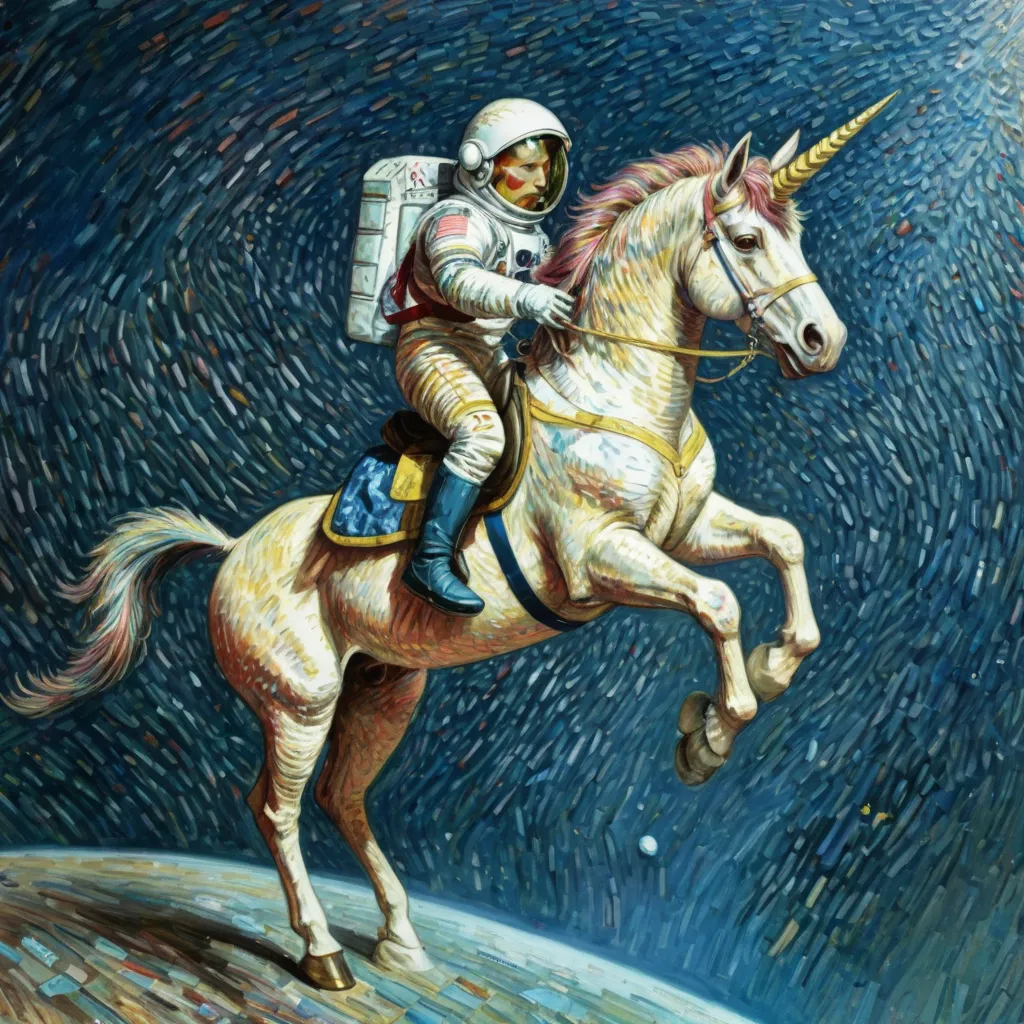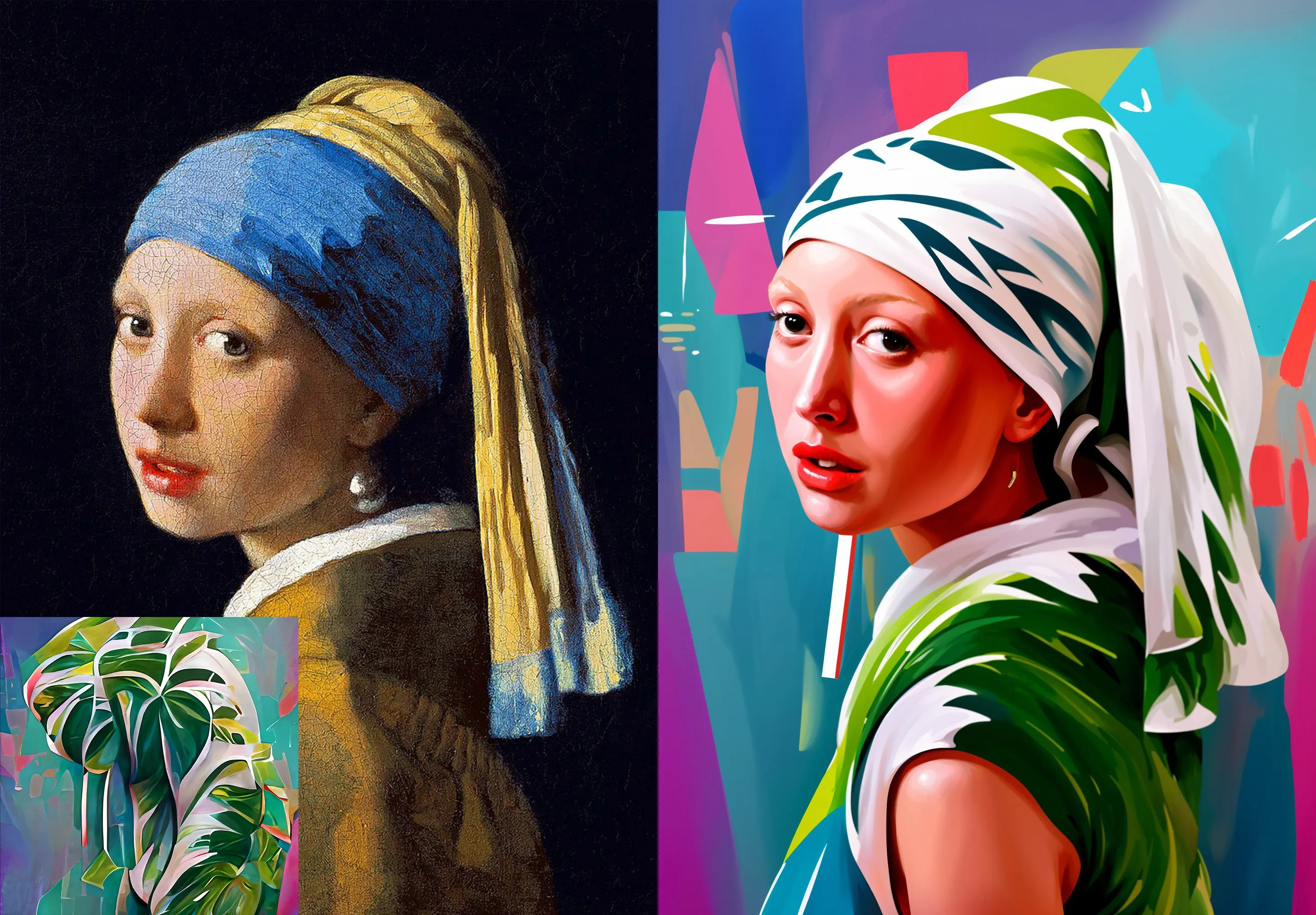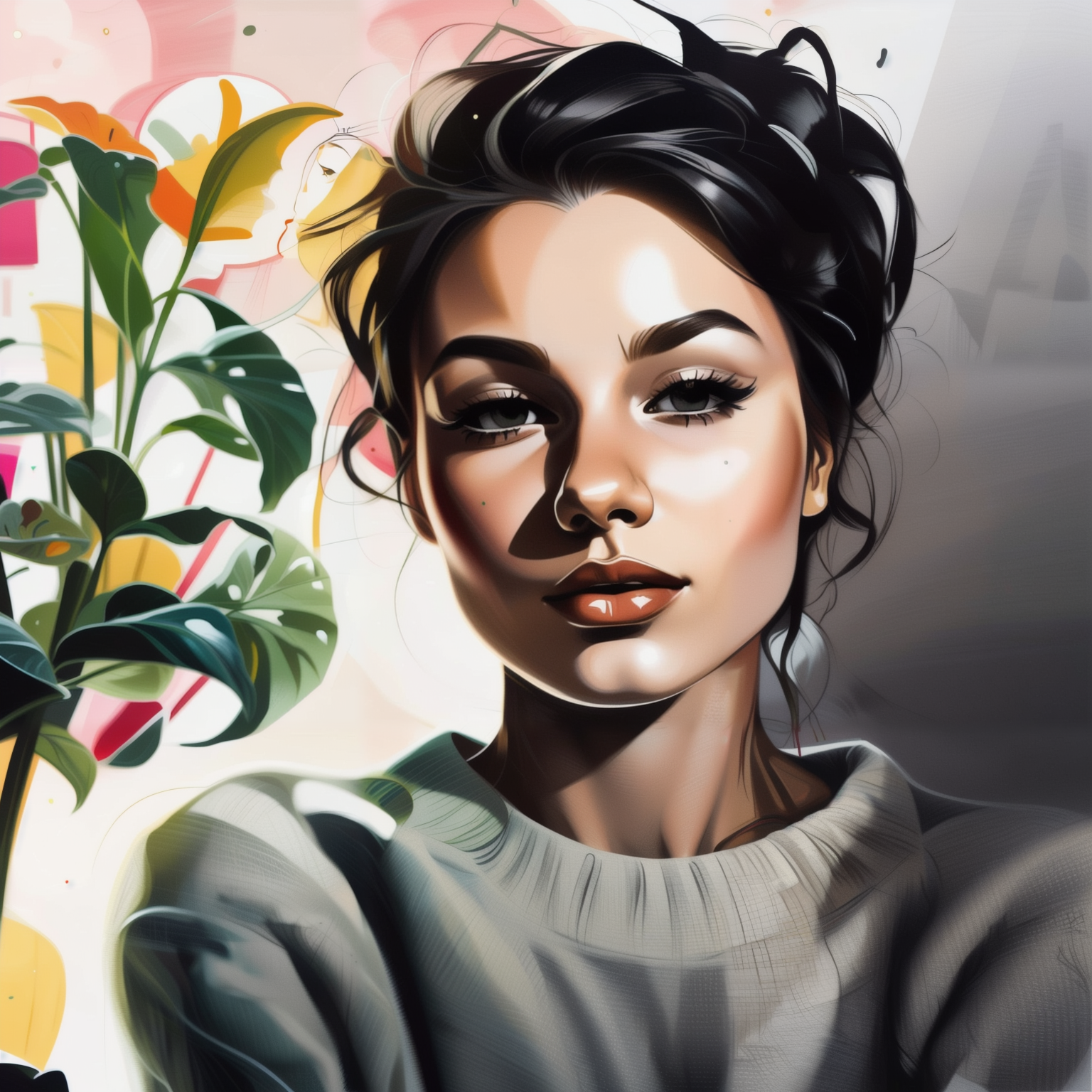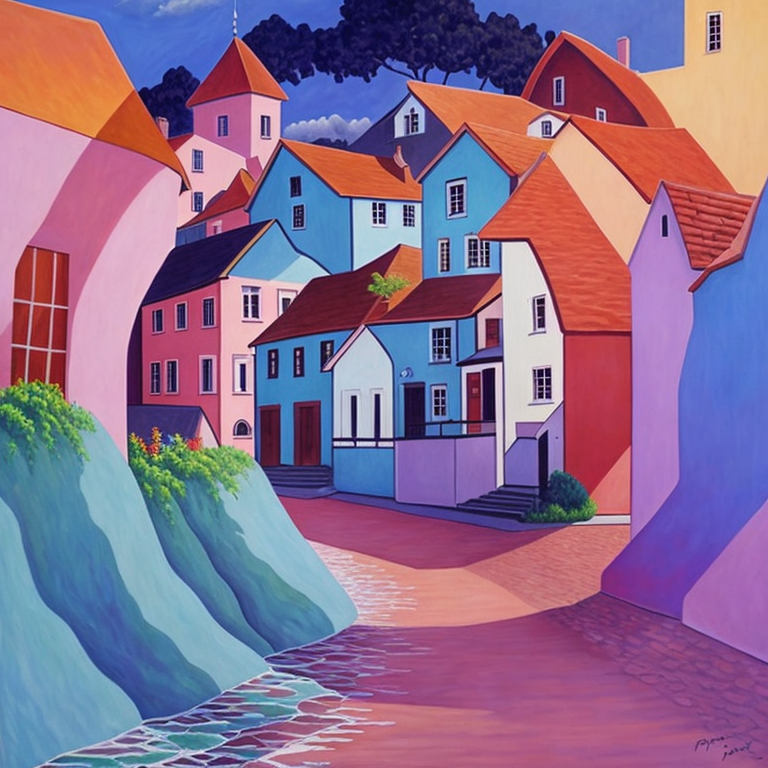style-transfer
Maintainer: fofr

131

| Property | Value |
|---|---|
| Model Link | View on Replicate |
| API Spec | View on Replicate |
| Github Link | View on Github |
| Paper Link | No paper link provided |
Create account to get full access
Model overview
The style-transfer model allows you to transfer the style of one image to another. This can be useful for creating artistic and visually interesting images by blending the content of one image with the style of another. The model is similar to other image manipulation models like become-image and image-merger, which can be used to adapt or combine images in different ways.
Model inputs and outputs
The style-transfer model takes in a content image and a style image, and generates a new image that combines the content of the first image with the style of the second. Users can also provide additional inputs like a prompt, negative prompt, and various parameters to control the output.
Inputs
- Style Image: An image to copy the style from
- Content Image: An image to copy the content from
- Prompt: A description of the desired output image
- Negative Prompt: Things you do not want to see in the output image
- Width/Height: The size of the output image
- Output Format/Quality: The format and quality of the output image
- Number of Images: The number of images to generate
- Structure Depth/Denoising Strength: Controls for the depth and denoising of the output image
Outputs
- Output Images: One or more images generated by the model
Capabilities
The style-transfer model can be used to create unique and visually striking images by blending the content of one image with the style of another. It can be used to transform photographs into paintings, cartoons, or other artistic styles, or to create surreal and imaginative compositions.
What can I use it for?
The style-transfer model could be used for a variety of creative projects, such as generating album covers, book illustrations, or promotional materials. It could also be used to create unique artwork for personal use or to sell on platforms like Etsy or DeviantArt. Additionally, the model could be incorporated into web applications or mobile apps that allow users to experiment with different artistic styles.
Things to try
One interesting thing to try with the style-transfer model is to experiment with different combinations of content and style images. For example, you could take a photograph of a landscape and blend it with the style of a Van Gogh painting, or take a portrait and blend it with the style of a comic book. The model allows for a lot of creative exploration and experimentation.
This summary was produced with help from an AI and may contain inaccuracies - check out the links to read the original source documents!
Related Models

become-image

261
The become-image model, created by maintainer fofr, is an AI-powered tool that allows you to adapt any picture of a face into another image. This model is similar to other face transformation models like face-to-many, which can turn a face into various styles like 3D, emoji, or pixel art, as well as gfpgan, a practical face restoration algorithm for old photos or AI-generated faces. Model inputs and outputs The become-image model takes in several inputs, including an image of a person, a prompt describing the desired output, a negative prompt to exclude certain elements, and various parameters to control the strength and style of the transformation. The model then generates one or more images that depict the person in the desired style. Inputs Image**: An image of a person to be converted Prompt**: A description of the desired output image Negative Prompt**: Things you do not want in the image Number of Images**: The number of images to generate Denoising Strength**: How much of the original image to keep Instant ID Strength**: The strength of the InstantID Image to Become Noise**: The amount of noise to add to the style image Control Depth Strength**: The strength of the depth controlnet Disable Safety Checker**: Whether to disable the safety checker for generated images Outputs An array of generated images in the desired style Capabilities The become-image model can adapt any picture of a face into a wide variety of styles, from realistic to fantastical. This can be useful for creative projects, generating unique profile pictures, or even producing concept art for games or films. What can I use it for? With the become-image model, you can transform portraits into various artistic styles, such as anime, cartoon, or even psychedelic interpretations. This could be used to create unique profile pictures, avatars, or even illustrations for a variety of applications, from social media to marketing materials. Additionally, the model could be used to explore different creative directions for character design in games, movies, or other media. Things to try One interesting aspect of the become-image model is the ability to experiment with the various input parameters, such as the prompt, negative prompt, and denoising strength. By adjusting these settings, you can create a wide range of unique and unexpected results, from subtle refinements to the original image to completely surreal and fantastical transformations. Additionally, you can try combining the become-image model with other AI tools, such as those for text-to-image generation or image editing, to further explore the creative possibilities.
Updated Invalid Date

neuralneighborstyletransfer

7
The neuralneighborstyletransfer model is a technique that can transfer the texture and style of one image onto another. It is similar to other style transfer models like style-transfer, clipstyler, and style-transfer-clip, but has some unique capabilities. The model was created by nkolkin13, a researcher at the Toyota Technological Institute at Chicago. Model inputs and outputs The neuralneighborstyletransfer model takes two inputs - a content image and a style image. The content image is the image you want to apply the style to, while the style image provides the artistic style. The model then generates an output image that combines the content of the first image with the style of the second. Inputs Content**: The image you want to apply the style to. Style**: The image that provides the artistic style to be transferred. Outputs Output**: The image that combines the content of the first image with the style of the second. Capabilities The neuralneighborstyletransfer model can effectively transfer the texture and style of one image onto another, preserving the content and structure of the original image. It is able to capture a wide range of artistic styles, from impressionist paintings to abstract expressionism. The model also allows for fine-tuning of the balance between content preservation and style transfer through an adjustable "alpha" parameter. What can I use it for? The neuralneighborstyletransfer model can be useful for a variety of creative and artistic applications. It could be used to create unique artwork by applying the style of famous paintings to personal photos or digital illustrations. It could also be used to generate stylized video frames for creative video editing or animation projects. Additionally, the model could be integrated into various design and creative applications to enhance visual content. Things to try One interesting thing to try with the neuralneighborstyletransfer model is experimenting with different style images to see how they affect the final output. The model seems to work particularly well with style images that have large, distinct visual elements, such as cubist paintings or abstract expressionist works. You can also try adjusting the "alpha" parameter to find the right balance between content preservation and style transfer for your specific use case.
Updated Invalid Date

image-merger

5
image-merger is a versatile AI model developed by fofr that can merge two images together with an optional third image for control net. This model can be particularly useful for tasks like photo manipulation, image composition, and creative visual effects. It offers a range of features and options to customize the merging process, making it a powerful tool for both professional and hobbyist users. Similar models include image-merge-sdxl, which also merges two images, become-image, which adapts a face into another image, gfpgan, a face restoration algorithm, and face-to-many, which can transform a face into various styles. Model inputs and outputs image-merger takes a variety of inputs, including two images to be merged, a prompt to guide the merging, and optional settings like seed, steps, width, height, and more. The model can also use a third "control image" to influence the merging process. The output is an array of URIs, which can be images or an animated video showing the merging process. Inputs image_1**: The first image to be merged image_2**: The second image to be merged prompt**: A text prompt to guide the merging process control_image**: An optional image to use with control net to influence the merging seed**: A seed value to fix the random generation for reproducibility steps**: The number of steps to use in the merging process width* and *height**: The desired output dimensions merge_mode**: The mode to use for merging the images animate**: Whether to animate the merging process upscale_2x**: Whether to upscale the output by 2x upscale_steps**: The number of steps to use for the upscaling animate_frames**: The number of frames to generate for the animation negative_prompt**: Things to avoid in the merged image image_1_strength* and *image_2_strength**: The strength of each input image Outputs An array of URIs representing the merged image or animated video Capabilities image-merger is capable of seamlessly blending two images together, with an optional third image used as a control net to influence the merging process. This allows users to create unique and visually striking compositions, combining different elements in creative ways. The model's flexibility in terms of input parameters and merging modes enables a wide range of applications, from photo editing and visual effects to conceptual art and experimental design. What can I use it for? image-merger can be used for a variety of creative and practical applications, such as: Photo Manipulation**: Combine multiple images to create unique and visually compelling compositions, such as surreal landscapes, fantasy scenes, or collages. Visual Effects**: Use the model to generate animated transitions, morph effects, or other dynamic visual elements for video production, motion graphics, or interactive experiences. Conceptual Art**: Explore the intersection of AI-generated imagery and human creativity by using image-merger to generate unexpected and thought-provoking visual compositions. Product Visualization**: Experiment with different product designs or packaging by merging images of prototypes or mock-ups with real-world environments. Things to try One interesting aspect of image-merger is its ability to use a third "control image" to influence the merging process. This can be particularly useful for achieving specific visual styles or moods, such as blending a portrait with a landscape in a dreamlike or surreal manner. Additionally, the model's animation capabilities allow users to explore the dynamic transformation between the input images, which can lead to captivating and unexpected results.
Updated Invalid Date

illusions

9
The illusions model is a Cog implementation of the Monster Labs' QR code control net that allows users to create visual illusions using img2img and masking support. This model is part of a collection of AI models created by fofr, who has also developed similar models like become-image, image-merger, sticker-maker, image-merge-sdxl, and face-to-many. Model inputs and outputs The illusions model allows users to generate images that create visual illusions. The model takes in a prompt, an optional input image for img2img, an optional mask image for inpainting, and a control image. It also allows users to specify various parameters like the seed, width, height, number of outputs, guidance scale, negative prompt, prompt strength, and controlnet conditioning. Inputs Prompt**: The text prompt that guides the image generation. Image**: An optional input image for img2img. Mask Image**: An optional mask image for inpainting. Control Image**: An optional control image. Seed**: The seed to use for reproducible image generation. Width**: The width of the generated image. Height**: The height of the generated image. Num Outputs**: The number of output images to generate. Guidance Scale**: The scale for classifier-free guidance. Negative Prompt**: The negative prompt to guide image generation. Prompt Strength**: The strength of the prompt when using img2img or inpainting. Sizing Strategy**: How to resize images, such as using the width/height, resizing based on the input image, or resizing based on the control image. Controlnet Start**: When the controlnet conditioning starts. Controlnet End**: When the controlnet conditioning ends. Controlnet Conditioning Scale**: How strong the controlnet conditioning is. Outputs Output Images**: An array of generated image URLs. Capabilities The illusions model can generate a variety of visual illusions, such as optical illusions, trick art, and other types of mind-bending imagery. By using the img2img and masking capabilities, users can create unique and surprising effects by combining existing images with the model's generative abilities. What can I use it for? The illusions model could be used for a range of applications, such as creating unique artwork, designing optical illusion-based posters or graphics, or even generating visuals for interactive entertainment experiences. The model's ability to work with existing images makes it a versatile tool for both professional and amateur creators looking to add a touch of visual trickery to their projects. Things to try One interesting thing to try with the illusions model is to experiment with using different control images and see how they affect the generated illusions. You could also try using the img2img and masking capabilities to transform existing images in unexpected ways, or to combine multiple images to create more complex visual effects.
Updated Invalid Date